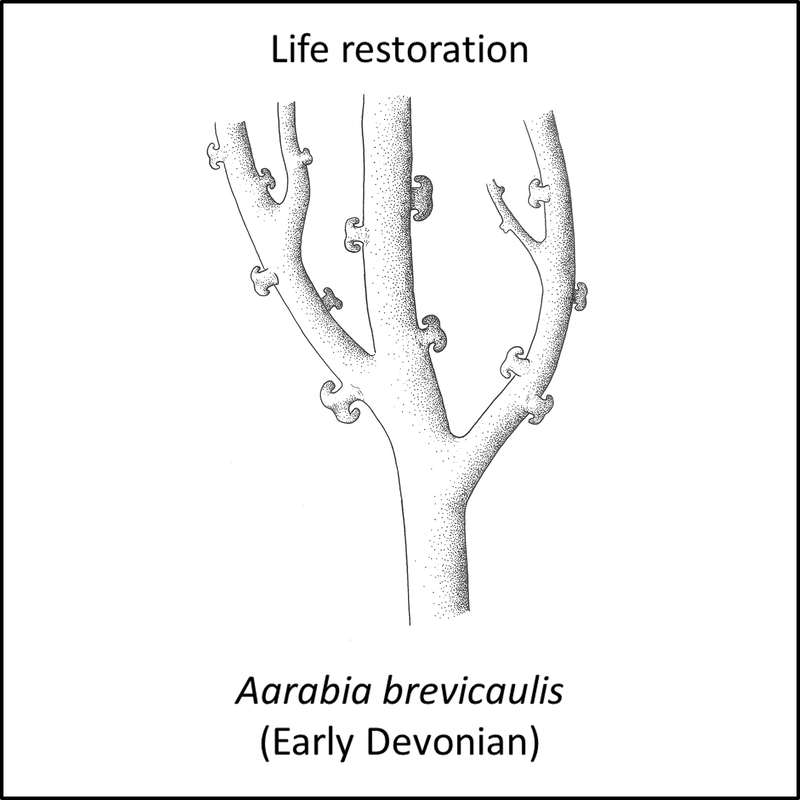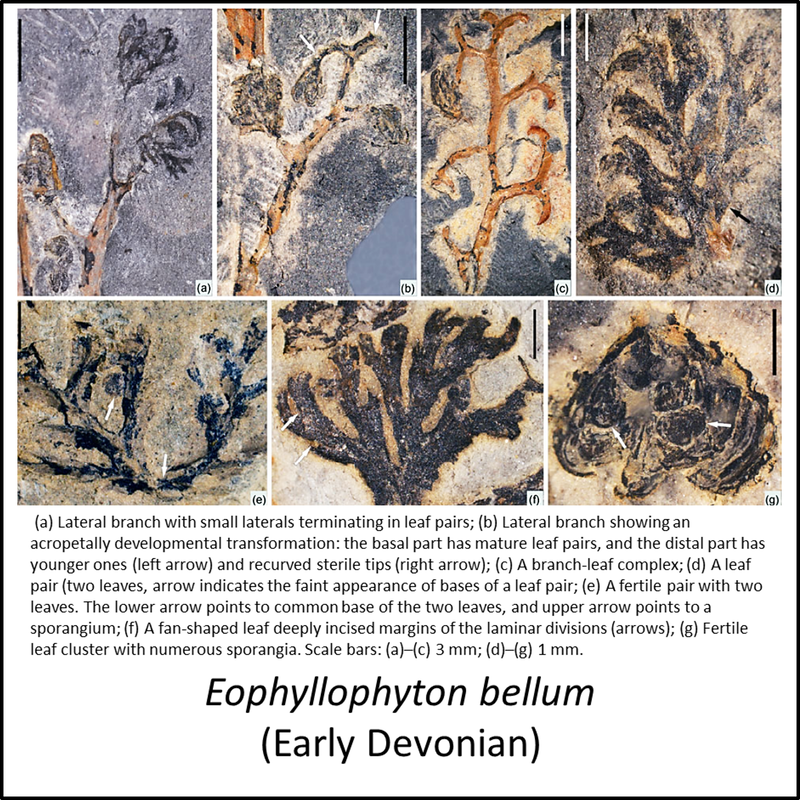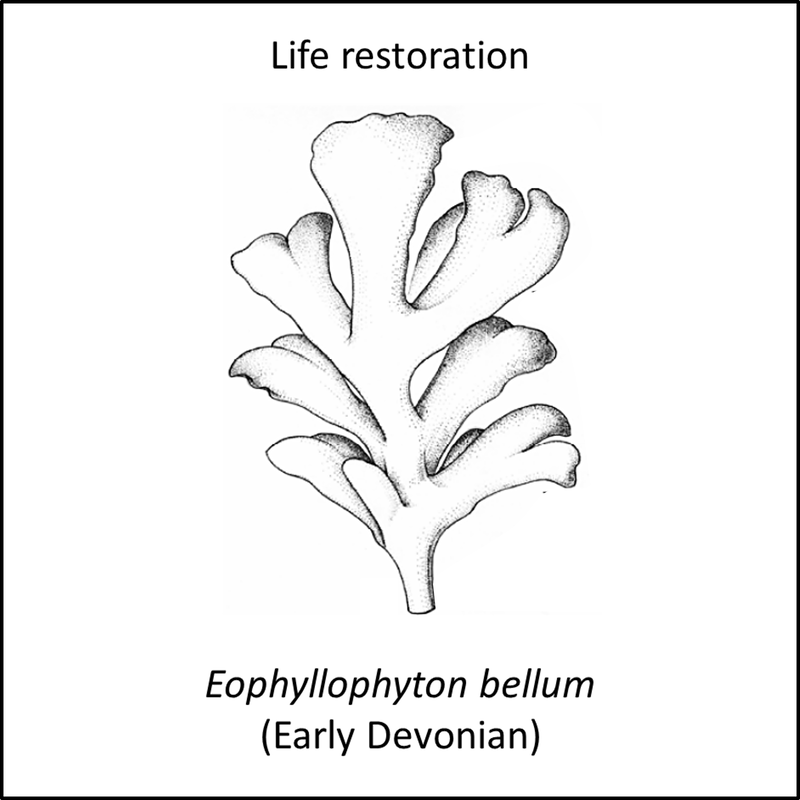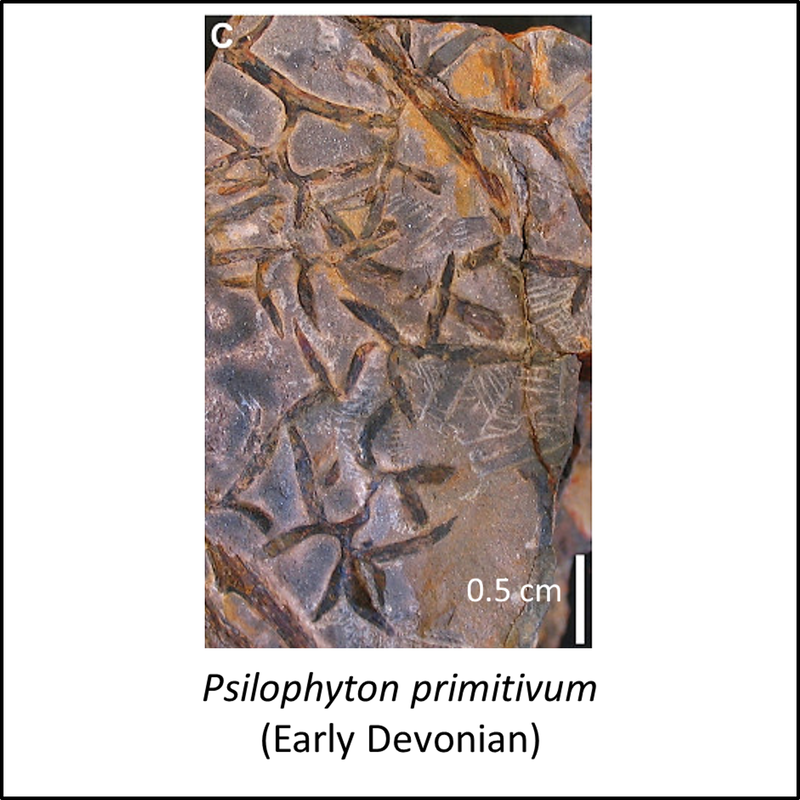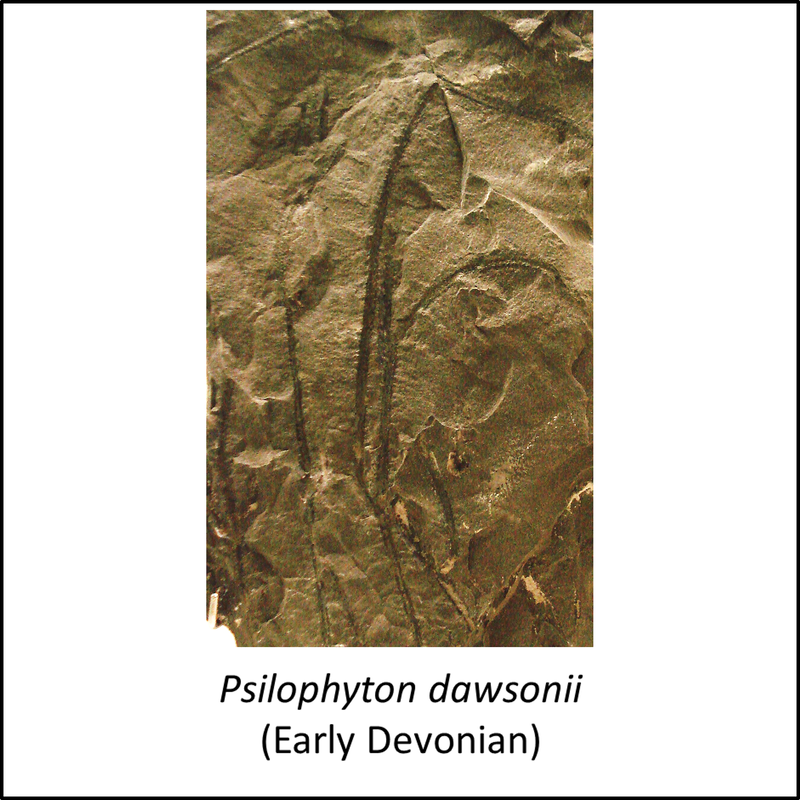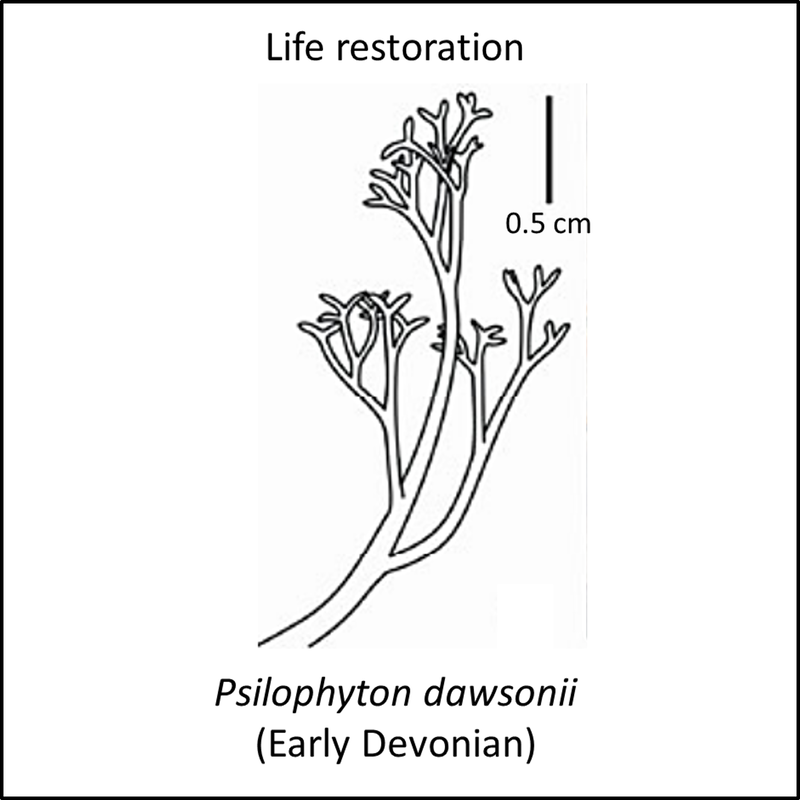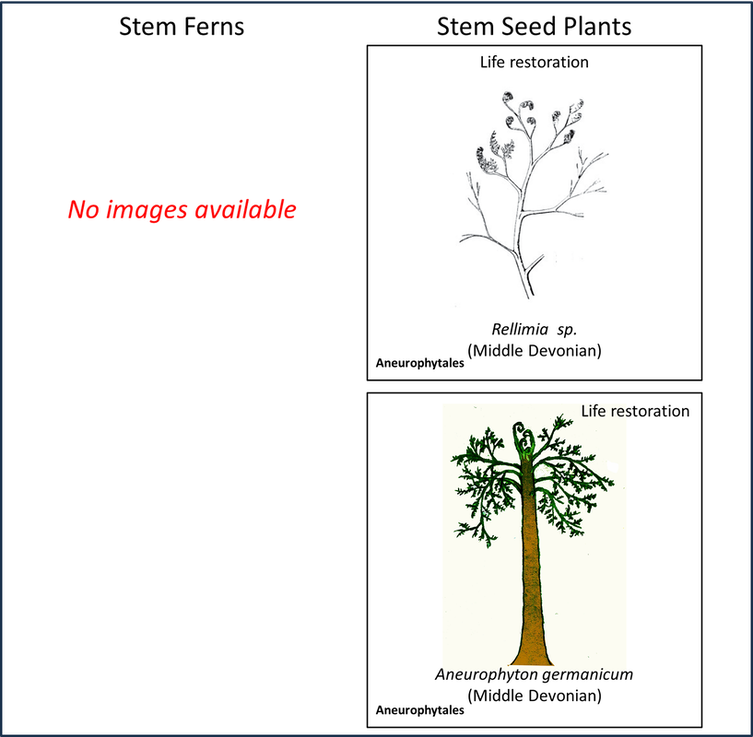This page covers the stem group of the euphyllophyte clade, which comprises the ferns (Subphylum Polypodiophytina, synonymous with Monilophyta) and the seed plants (Spermatophyta).
The phylogeny of the euphyllophyte stem group has not changed much in articles published over since 2000. A typical example is shown below:
The phylogeny of the euphyllophyte stem group has not changed much in articles published over since 2000. A typical example is shown below:
Figure 1. Time tree of the stem-Euphyllophyta
The oldest known members of the stem euphyllophytes are Eophyllophyton bellum and Psilophyton primitivum, both described from the Early Devonian (Pragian) Posongchong Formation in Wenshan district, Yunnan, China (Hao and Xue, 2013). These are illustrated below, together with the other species shown in the above tree (click on image for a larger view):
Figure 2. Images of stem-Euphyllophyta
The above images are ordered from most basal to most crownward, but there are too few of them to allow evolutionary trends to be suggested.
Some idea of the nature of the transition from the stem group to the crown group of the euphyllophytes can be obtained from a comparison of the above images with the examples of early crown-Euphyllophyta shown below:
Some idea of the nature of the transition from the stem group to the crown group of the euphyllophytes can be obtained from a comparison of the above images with the examples of early crown-Euphyllophyta shown below:
Figure 3. Examples of crown-Euphyllophyta
The euphyllophyte stem line includes a ghost lineage (shown as a blue bar in Figure 1), because the oldest known stem-group lycophyte (of mid-Silurian age; see page on the Lycophyta) is older than the stem-group euphyllophytes, which are of Early Devonian (Pragian) and younger age. Given that the two stem groups must have appeared at the same time, the euphyllophyte stem-group transition must also have begun in the mid-Silurian (Ludlow). Comparing this age with that of the oldest member of the crown euphyllophytes indicates that the stem-to-crown transition lasted around 20 million years, from the mid-Silurian to the Early Devonian (Figure 1).
References
Gerrienne, P., Servais, T., & Vecoli, M. (2016). Plant evolution and terrestrialization during Palaeozoic times—the phylogenetic context. Review of Palaeobotany and Palynology, 227, 4-18.
Hao, S., & Xue, J. (2013). The Early Devonian Posongchong Flora of Yunnan —A Contribution to an Understanding of the Evolution and Early Diversification of Vascular Plants. Science Press, Beijing, 366 pp.
Meyer-Berthaud, B., & Gerrienne, P. (2001). Aarabia, a new Early Devonian vascular plant from Africa (Morocco). Review of Palaeobotany and Palynology, 116(1-2), 39-53.
Hao, S., & Xue, J. (2013). The Early Devonian Posongchong Flora of Yunnan —A Contribution to an Understanding of the Evolution and Early Diversification of Vascular Plants. Science Press, Beijing, 366 pp.
Meyer-Berthaud, B., & Gerrienne, P. (2001). Aarabia, a new Early Devonian vascular plant from Africa (Morocco). Review of Palaeobotany and Palynology, 116(1-2), 39-53.
Image credits – stem-Euphyllophyta
- Figure 2 (Aarabia brevicaulis): Falconaumanni, CC BY-SA 3.0 <https://creativecommons.org/licenses/by-sa/3.0>, via Wikimedia Commons
- Figure 2 (Eophyllophyton bellum, fossil images): Open Access article Hao, S., & Xue, J. (2013). Earliest record of megaphylls and leafy structures, and their initial diversification. Chinese Science Bulletin, 58, 2784-2793.
- Figure 2 (Eophyllophyton bellum, life restoration): Open Access article Hao, S., & Xue, J. (2013). Earliest record of megaphylls and leafy structures, and their initial diversification. Chinese Science Bulletin, 58, 2784-2793.
- Figure 2 (Psilophyton primitivum): Open Access article Capel, E., Cleal, C. J., Xue, J., Monnet, C., Servais, T., & Cascales-Miñana, B. (2022). The Silurian–Devonian terrestrial revolution: diversity patterns and sampling bias of the vascular plant macrofossil record. Earth-Science Reviews, 231, 104085.
- Figure 2 (Psilophyton dawsonii, fossil): Ghedoghedo, CC BY-SA 3.0 <https://creativecommons.org/licenses/by-sa/3.0>, via Wikimedia Commons
- Figure 2 (Psilophyton dawsonii, life restoration): Open Access article Hao, S., & Xue, J. (2013). Earliest record of megaphylls and leafy structures, and their initial diversification. Chinese Science Bulletin, 58, 2784-2793.
- Figure 3 (Rellimia sp.): From Open Access article Harrison, C. J., & Morris, J. L. (2018). The origin and early evolution of vascular plant shoots and leaves. Philosophical Transactions of the Royal Society B: Biological Sciences, 373(1739), 20160496.
- Figure 3 (Aneurophyton germanicum): Ghedoghedo, CC BY-SA 3.0 <https://creativecommons.org/licenses/by-sa/3.0>, via Wikimedia Commons

